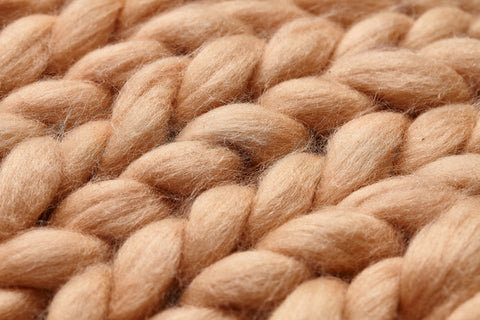
The way in which you care for your wool garments will determine how long the material lasts. You'll want this natural material to keep its natural shape without sagging or stretching out so far that it no longer fits. Wool is comprised of scales—yes, scales—that make up the sheep hair. High heat in the wash or dryer makes these scales bind, which is why your new wool base layer now looks like it would fit a newborn. As we all know, wool can be quite pricey. With proper care, you can protect your investment and your wool clothing will last you for years to come.
It's important to first check to see which type of wool your garment is—virgin or superwash. Virgin wool is simply the sheep's hair spun into yarns and left untreated. If you bought your socks or sweater from a local farmer or artisan, it may very likely be made of virgin wool. If you have superwash, the wool yarns have been treated to be shrink-resistant using chlorine and polymer resin. Each type of wool must be cared for differently. While all wool is washable, that doesn't necessarily mean that all wools are machine washable. Here are specifics on how to care for both virgin and superwash wool garments.
Virgin Wool
Because virgin wool is so delicate, always hand wash it. Use an appropriate soap made to specifically wash wool so as to not damage the scales. When finished washing, air dry socks, sweaters, and other wool garments on flat surfaces away from direct sunlight. To expedite the drying process, you can roll your clothing in white towels to absorb the water. If need be, you can toss your wool socks in the washer on the gentle cycle. Just make sure to air dry them.
If your socks start to look worn out, don't use chlorine bleach on them! This could weaken the fibers and decrease the lifespan they could have. Instead, use an oxygen-based bleach like OxiClean to rid your wool socks and other garments of stains and yellowing.
Superwash Wool
Garments made from superwash wool yarns can be machine washed like all your other clothing. Wash them in warm water and tumble dry on your lowest heat setting. Remember, high temperatures will damage the wool scales and cause shrinkage. It would be best, however, to air dry your wool if you have the time. Merino wool is oftentimes considered superwash, as it's blended with shrink resistant and moisture wicking materials. Because of this, this type of wool is better suited for performance.
Caring for Wool After Washing
Once your wool garments are clean, there are several things you can do to avoid over washing them. If your base layers have pockets, take everything out of them. This will prevent gravity from creating sags in the wool, so it's ready to use the next time you take it out of the closet. If you're packing your wool up for a trip, you can use tissue paper to roll it up in to keep the fabric's shape intact. Naturally, this is less important for base layers and socks. If your sweaters have gotten wrinkled or hangers have left bulges in the shoulders, bring your wool clothing into the bathroom with you before you shower. The steam from the water will help relax the fabric back into place. You can also use an iron on the steam setting to get your garments looking great.
If you accidentally spill coffee or a bit of your meal onto your wool, there is no need to throw it in the sink or washing machine right away. Rinse the stains in cold water and then blot them dry. You can also use a drop or two of wool soap to gently clean the stained area. If the stain still remains, then you may need to go ahead and fully wash the garment. As the seasons change and you aren't wearing your wool as often, have your garments dry cleaned to keep them in great condition. Be sure to read the label before dropping off your clothing to ensure it's safe.
Keep your wool socks, base layers, sweaters, and other garments looking and fitting perfectly with this simple care guide.
